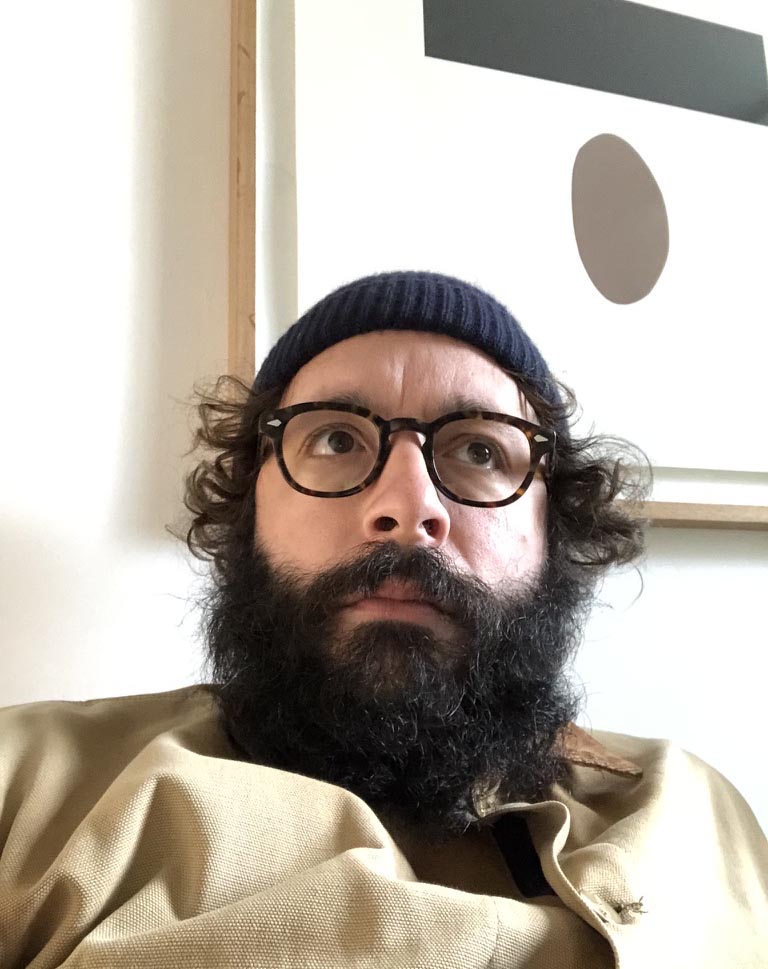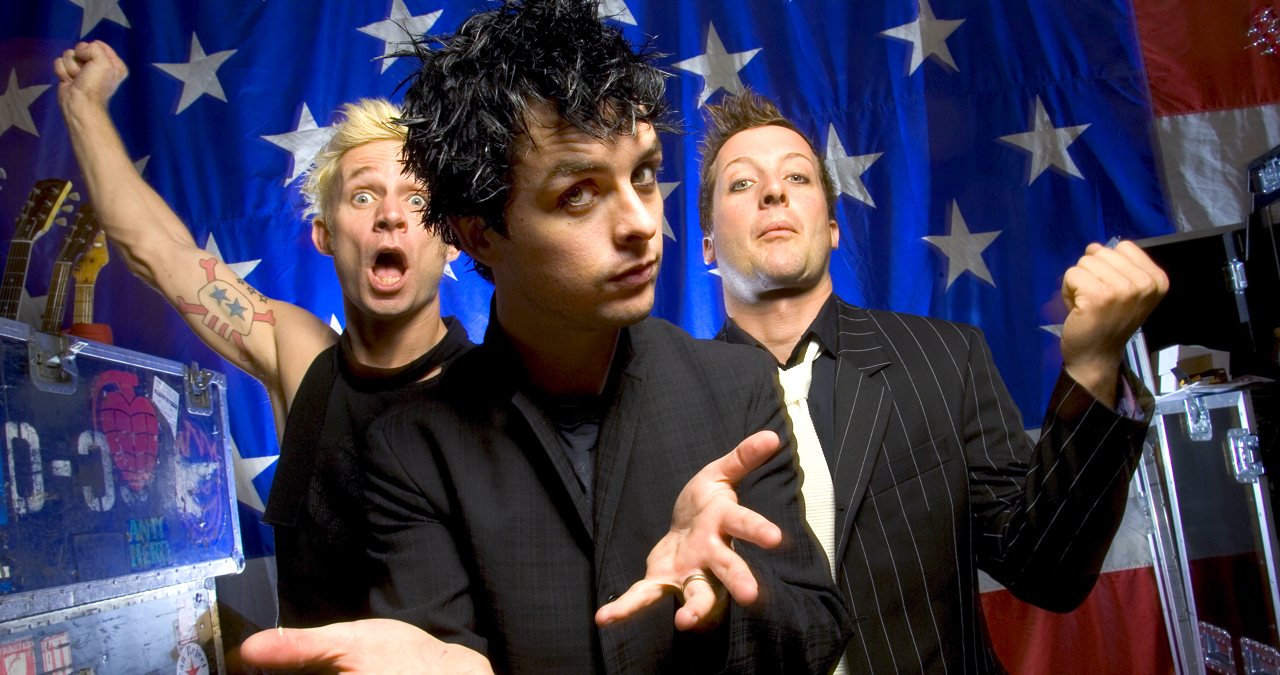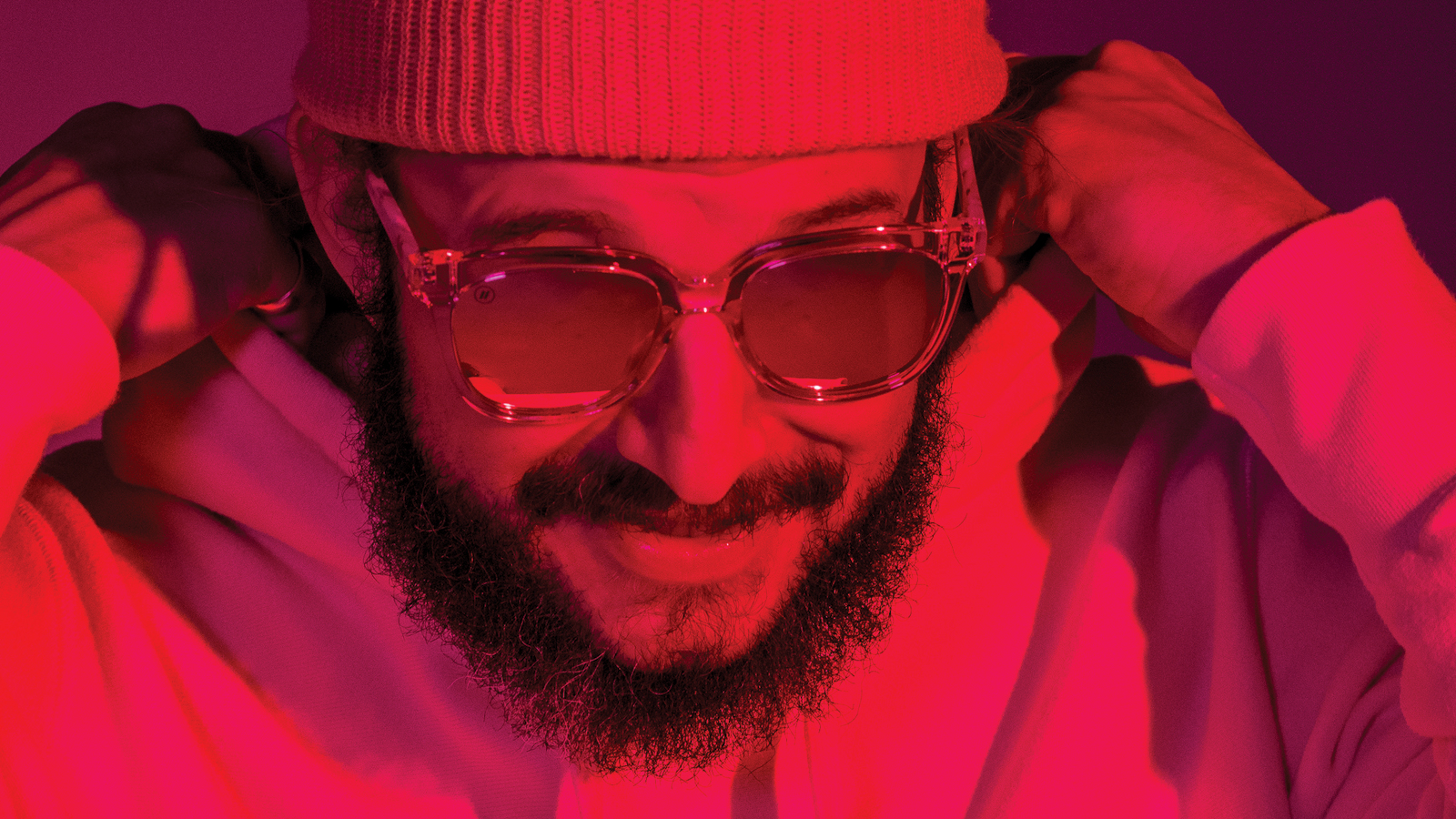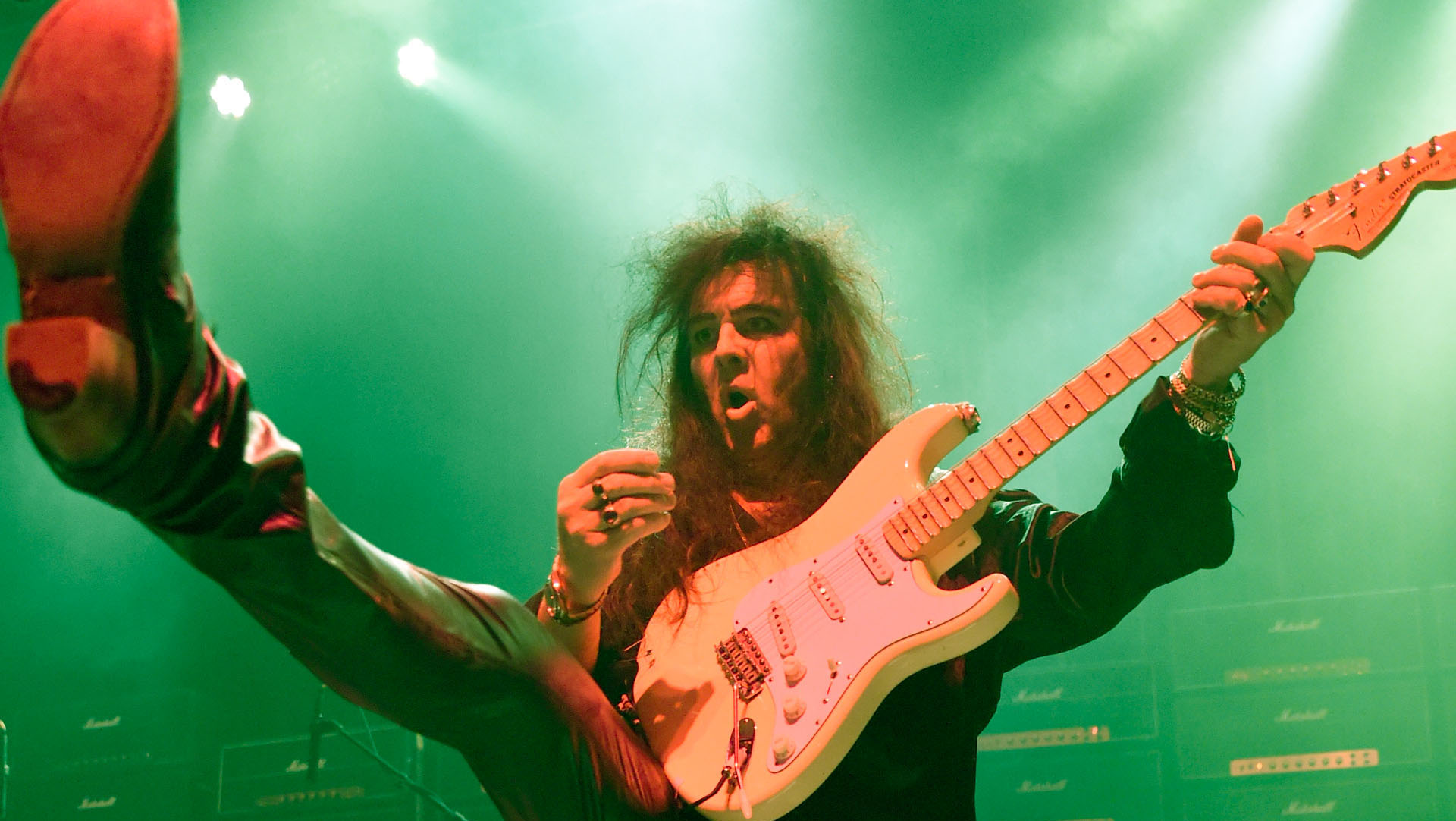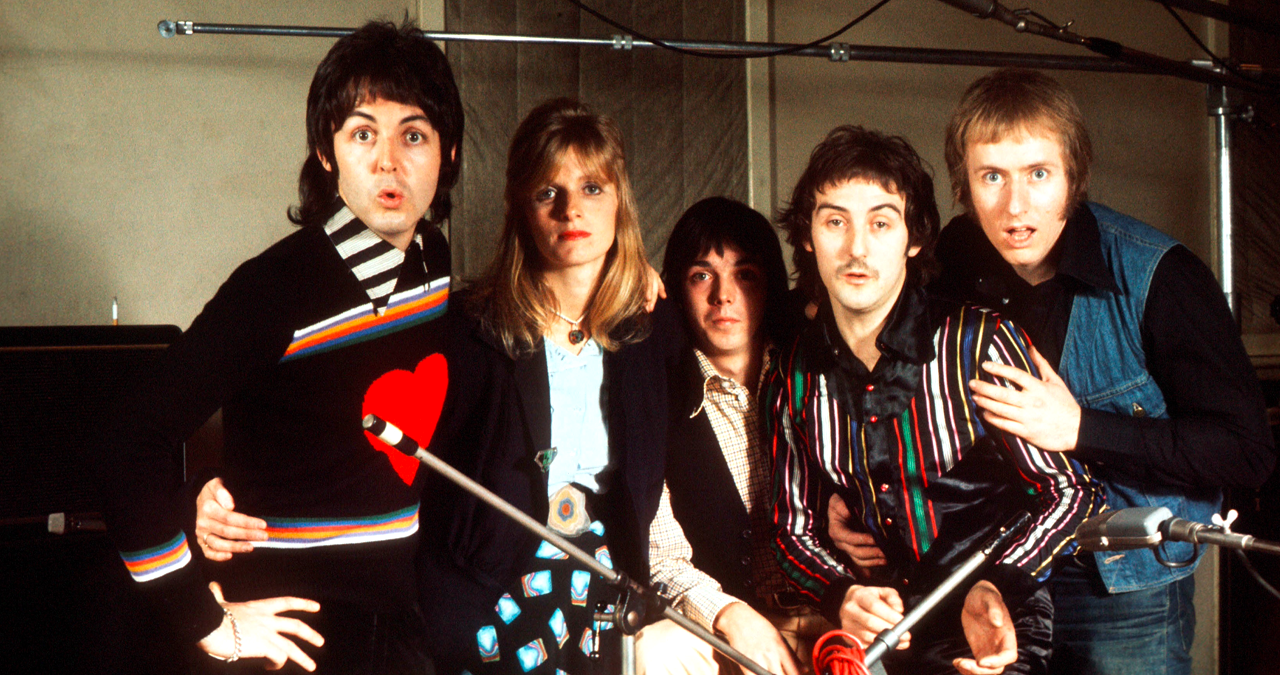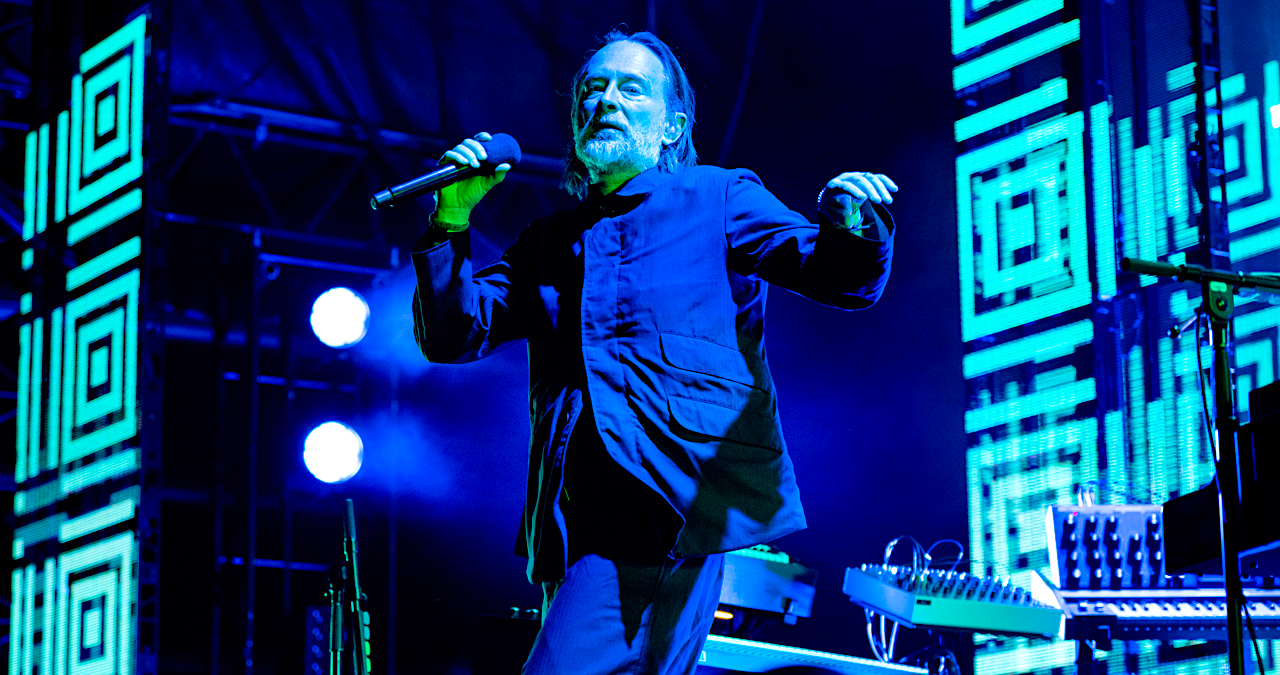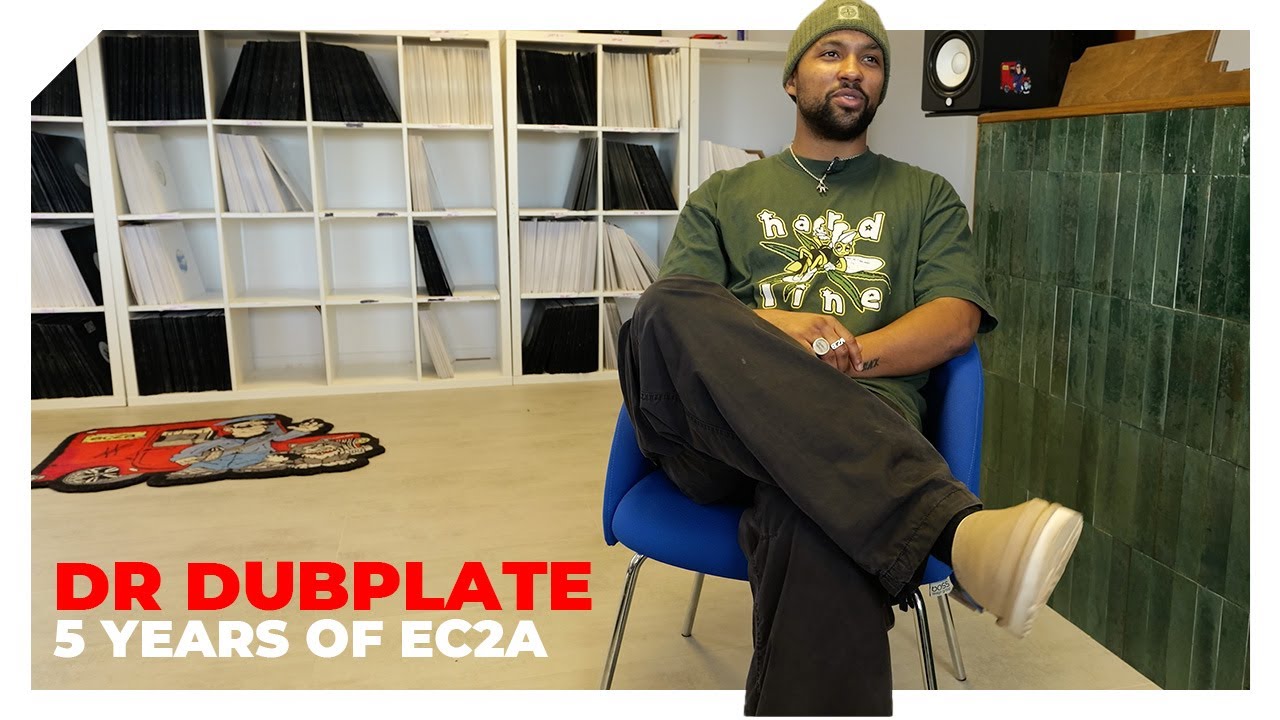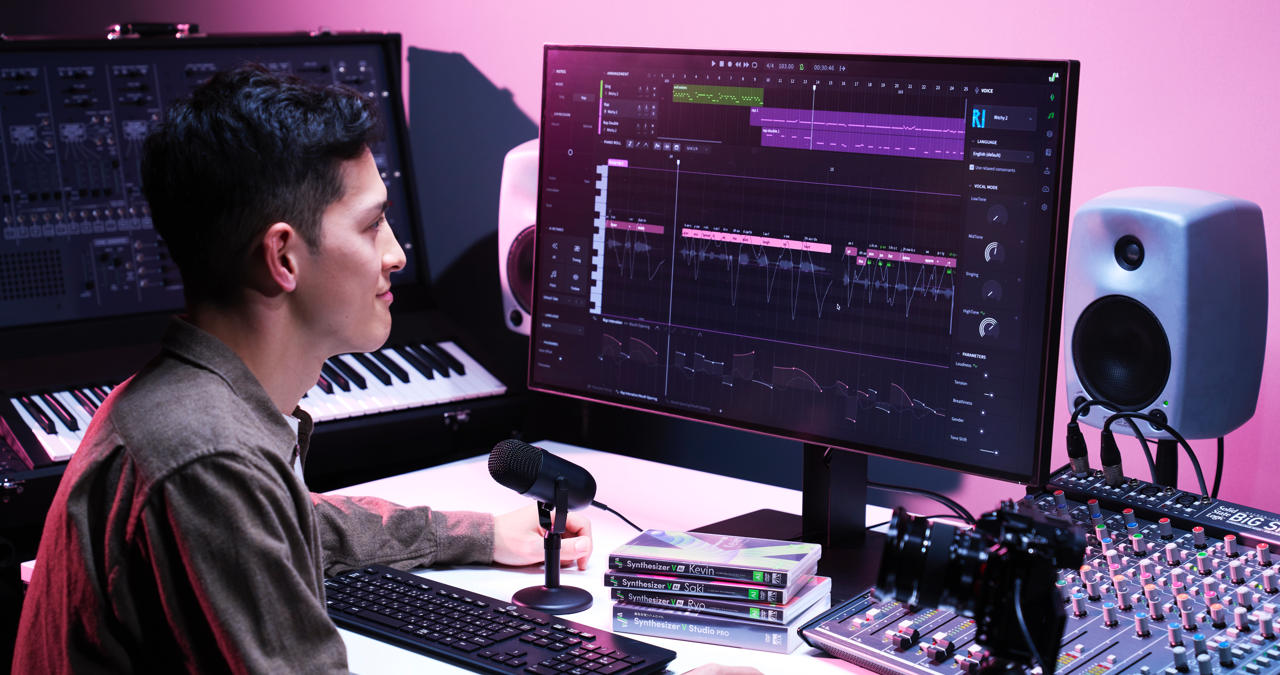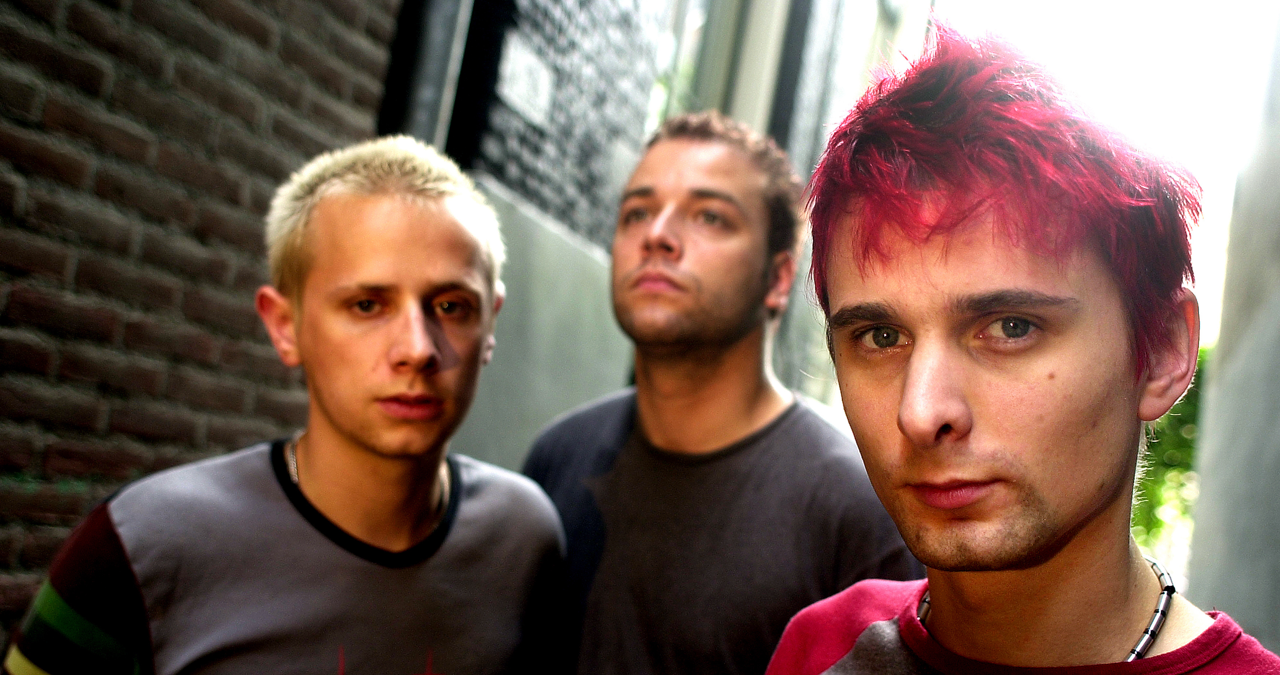“It dawned on me, ‘Wow! I think that we’re learning how to do this just how Bob learned how to play’”: How Timothée Chalamet went from a complete guitar novice to become Bob Dylan onscreen
Chalamet's guitar teacher Larry Saltzman reveals how the pursuit of authenticity and a $200 Yamaha acoustic helped the star nail his Oscar-nominated performance in A Complete Unknown
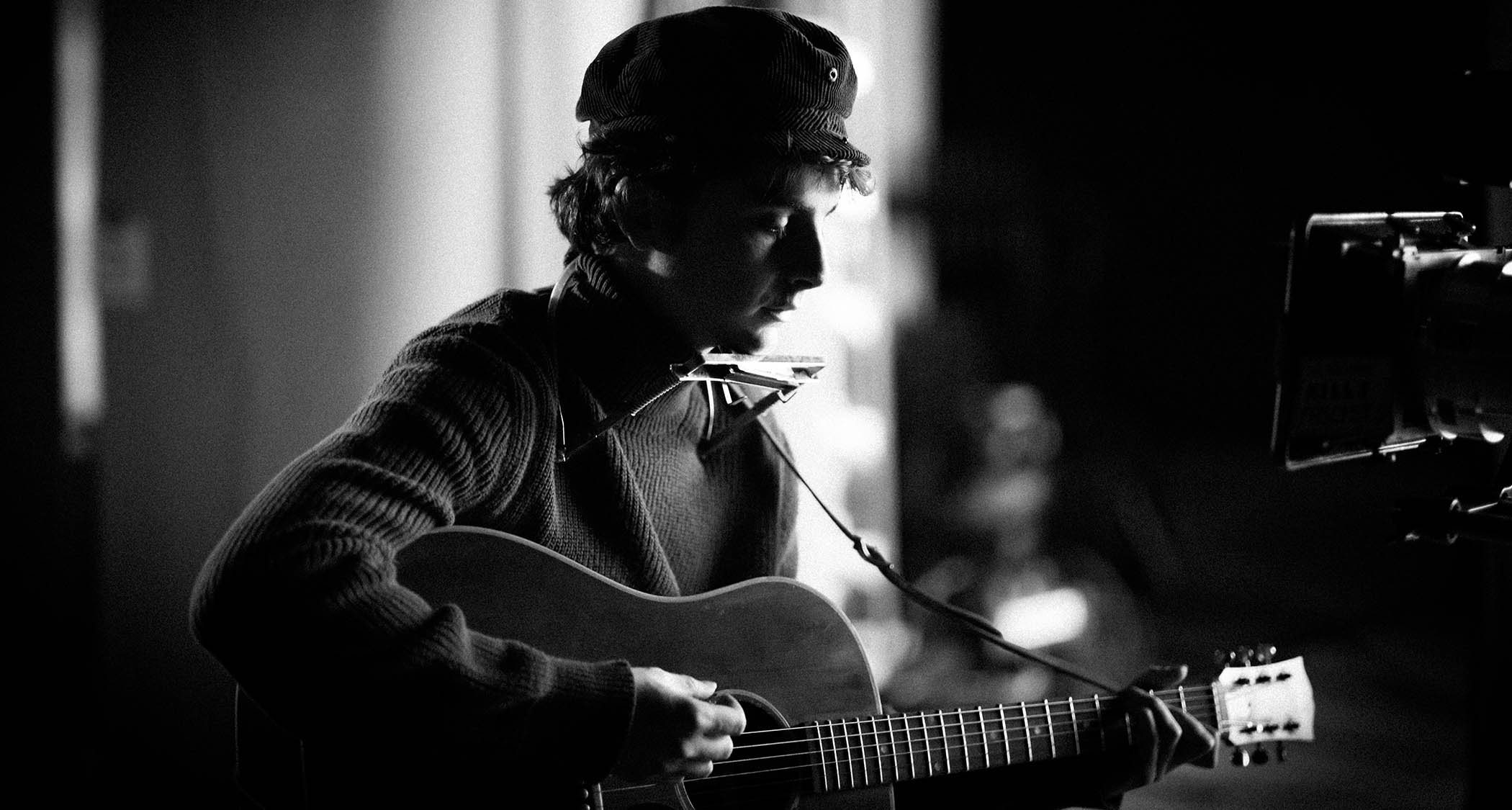
A Complete Unknown, the Bob Dylan biopic directed by James Mangold and featuring Timothée Chalamet in the lead role, is a story about the early years of the folk icon, the Minneapolis transplant with an acoustic guitar strapped to his back, who hitches a ride to the Big Apple and becomes the voice of a generation.
It follows Dylan’s story as he searches for the hospitalised Woody Guthrie (who is languishing in Morris Plains, New Jersey, not NYC), performs for him, meeting Pete Seeger along the way, establishing himself in the Greenwich Village folk scene, duets with Joan Baez, and how fame and the siren call of the electric guitar augmented his persona and his art as the story inexorably rolls on towards Newport Folk Festival 1965.
But it’s really a story about authenticity. That is the tension that keeps the narrative whip-tight. What is authenticity in folk? Who is the real Bob Dylan? The Dylan Chalamet portrays is a man who conjures this mythology surrounding himself and his origin, then holds this artifice in equilibrium with an artist’s duty to the truth, to tell it as the poet sees it.
Chalamet has received an Oscar nomination for Best Actor in a Leading Role. His performance works because it feels lived in, authentic, and a big part of that is down to Larry Saltzman’s tutelage, Chalamet’s “guitar coach” for the role.
The production reached out to Saltzman in 2019. Chalamet, a fellow New Yorker, would rock up to Saltzman's house in late November, booked in for a four-month course of intenstive lessons before the shoot. Then Covid happened. Four months became four and a half years. In the meantime, Chalamet shot Dune Part Two. But he kept practising, and you can see those extra years of practice on the screen.
Joining us via Zoom, Saltzman tells us just how he took a greenhorn guitar player with two chords (and no guitar) to his name and turned him into Dylan 2.0, mastering a tricksy, iconoclastic way of playing along the way.
How do you put together a syllabus for a beginner player who has to learn another player’s style in just four months?
Get the MusicRadar Newsletter
Want all the hottest music and gear news, reviews, deals, features and more, direct to your inbox? Sign up here.
“It happened organically. First, I had a script, which was essential. I was able to read the script of the movie and I made a list of all the songs that were in the film, and then I started to think about the songs. I was familiar – very familiar – with a lot of them but I have to say I wasn’t specifically familiar with the exact guitar parts and the capo positions, and so many other things.
“But I arranged them in what I considered to be a hierarchy, an order of an easier place to start down to the more difficult ones, and then, from there, the process revealed itself and I took it – and so did Tim – on a song-by-song basis.”
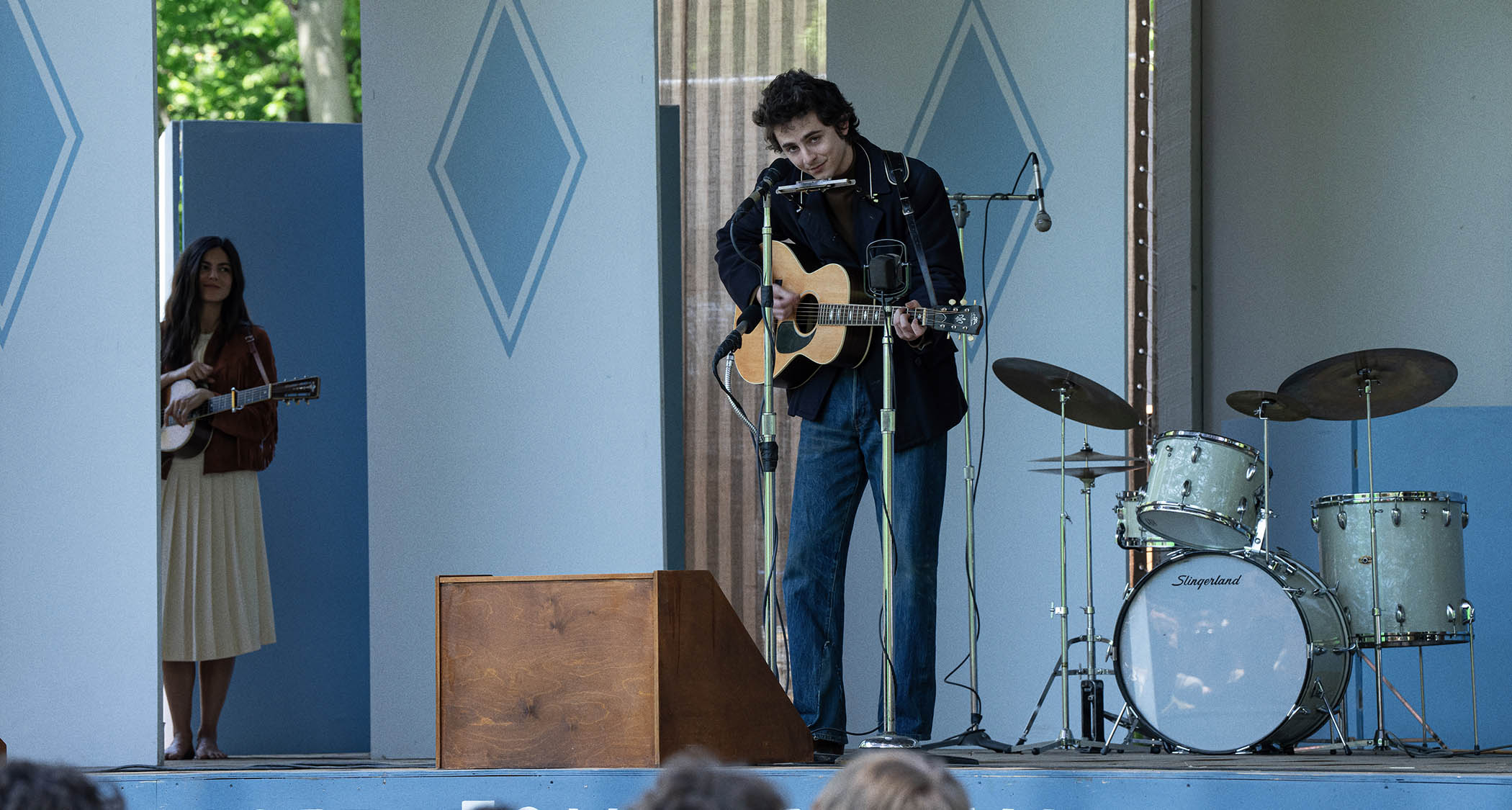
You started with Masters Of War, right?
“I probably started with that one because maybe it had two chords, E minor and D. He knew one or two chords, one guitar before we started, so you show him the shapes and you show him the strumming patterns.
“We listened to the record very carefully and we try to be as accurate as we could. The other thing that he did, which was terrific, was, from minute one, he sang, and I didn’t tell him to do that. It was brilliant.
“Maybe intuitively he knew to start singing, so he hit that first E minor chord and sang, ‘Come, ye masters of war…’ I was a little bit surprised that he did that, and then the process was we moved on to the next song, we moved on to the next song. And we we did it song by song. I’m sure we covered 30 or 40 songs during the whole process.”
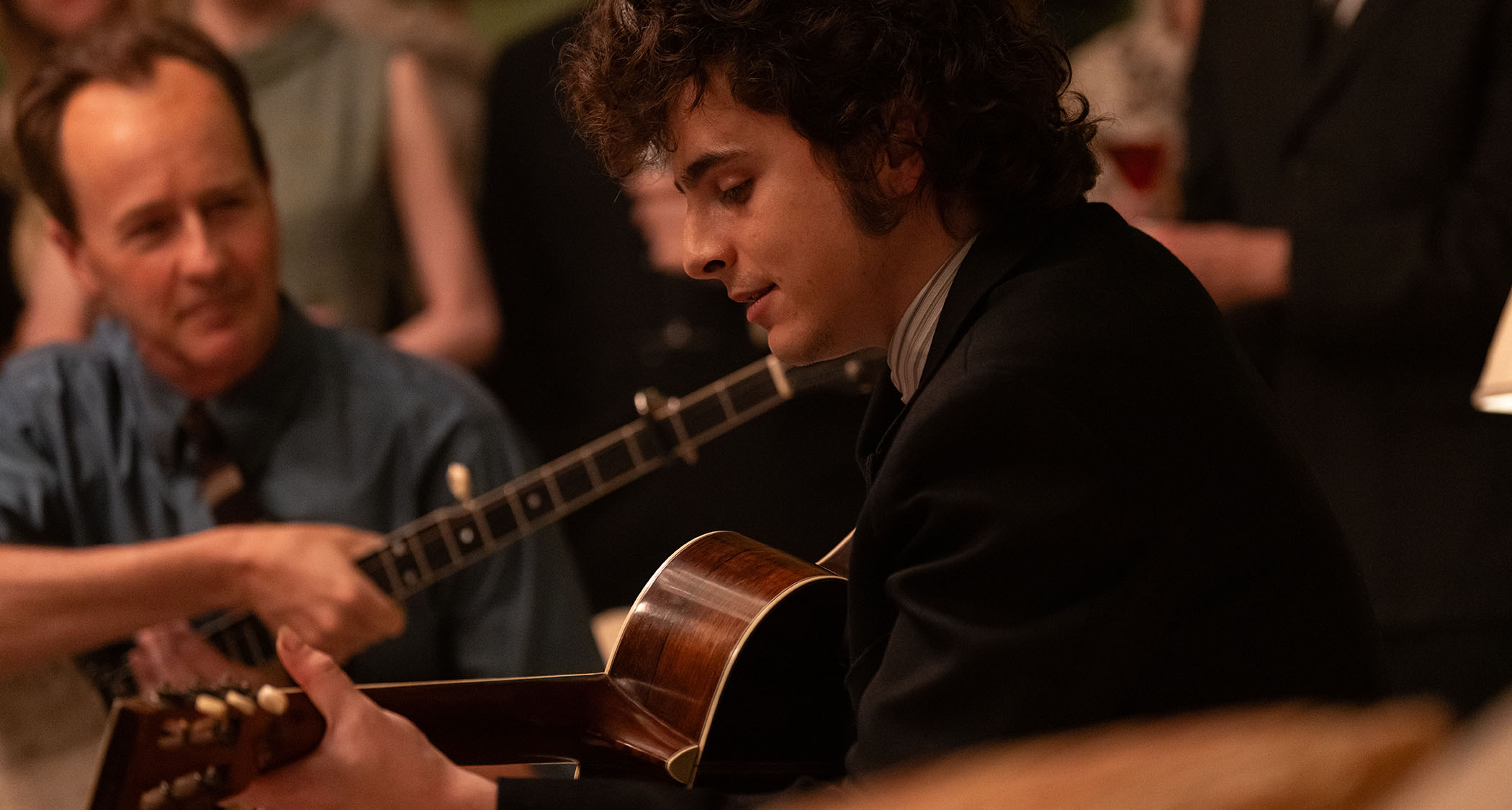
Bob Dylan has a difficult style to get to grips with. How did you teach that?
Authenticity was the name of the game for us
“What you said about Dylan’s style is completely right. Idiosyncratic and surprising. And also Dylan had to be, in this era, until he went electric at the very end of the film, he had to be his own one-man band, and you know what would happen, some new concept would get introduced, and then that concept would appear again two songs later.
“So I would be able to say to Tim, ‘Remember that thing that we did with the C chord? Hit a C bass note and strum and then we descend into B then an A? He picked out the bassline and strummed along – he’s doing the same thing here but he’s just doing it with G, F#, E minor.’
“So it was a cumulative process that built that way. It’s an interesting question. Because we worked it that way I didn’t really have to think about it as a global thing before we got into it song by song.”
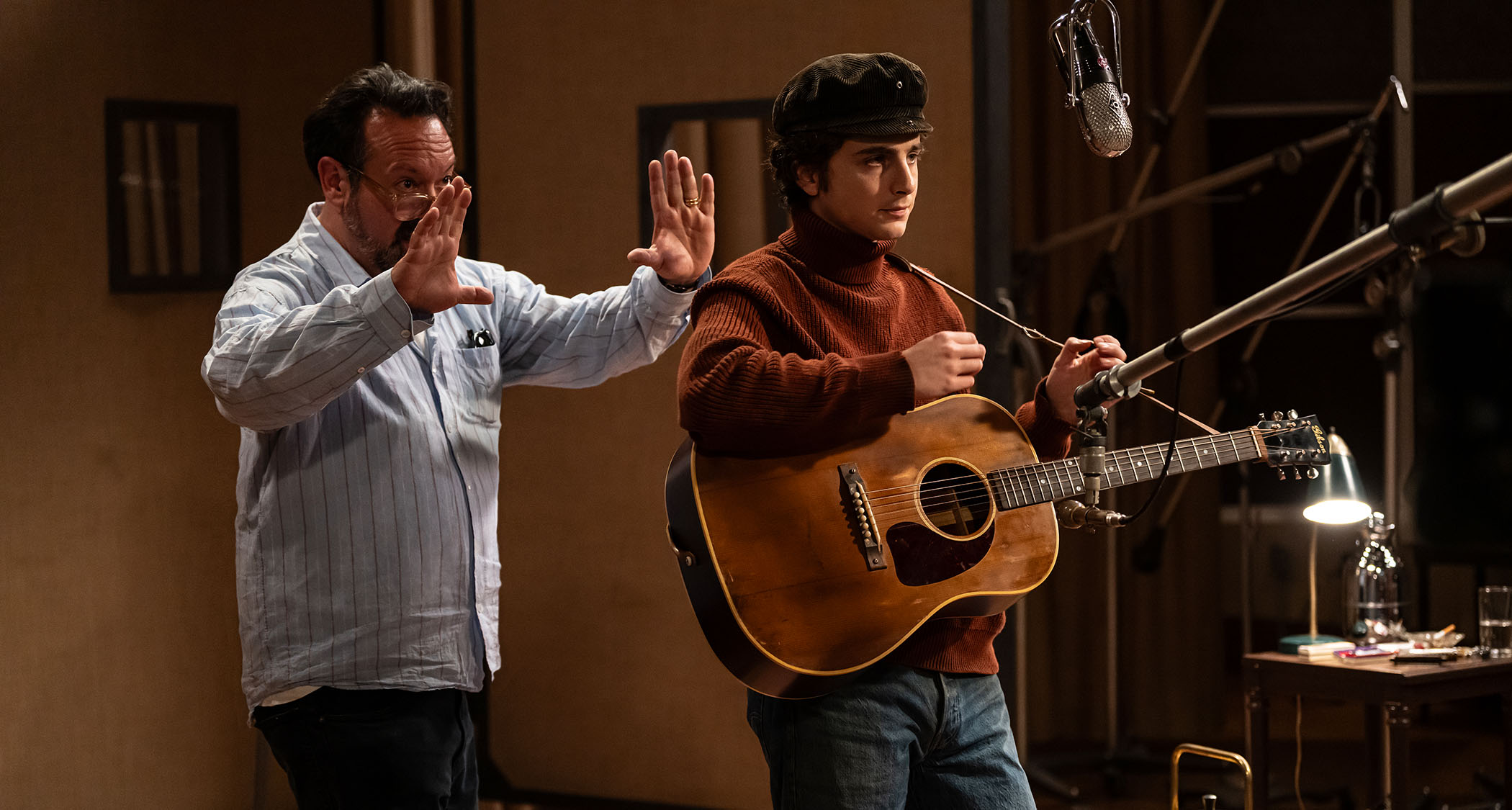
When you are looking at acting his style you are almost even more limited by the details. I’d play those chords with a barre but Dylan used his thumb, and therefore Timothée has to as well.
“We were just trying to be authentic – with good reason! Because authenticity is what’s required here, and the thing that you said about the thumb is exactly right. That would come up over and over again. The D chord, grabbing the F# with the thumb on the sixth string at the second fret.
“I watched archival footage from the era so that I could see this stuff. Dylan never played an F-shaped barre chord at the first fret the way we would play. He would always play a simple F on the top four strings and grab the bass note with the thumb, but [he] had enough finesse to mute the A string if needed. Authenticity was the name of the game for us.”
This production was interrupted by the pandemic. Did that extra time make a big difference in Timothée’s playing? Because maybe you can learn Dylan in four months, but to perform him like that takes longer.
“The extra time was was everything. The original plan was Timothy and I would have had four months together, and it wound up being four and a half years. And you know yourself, as a guitar player, it’s a whole lot different ball game between playing for four months or four and a half years.
“I don’t know what would have happened after just four months. He was a fantastic student and he did well from the very beginning, but just the volume of songs, chipping away at it for the four and a half years turned out to be a blessing and made I think what you see in the film doable.”
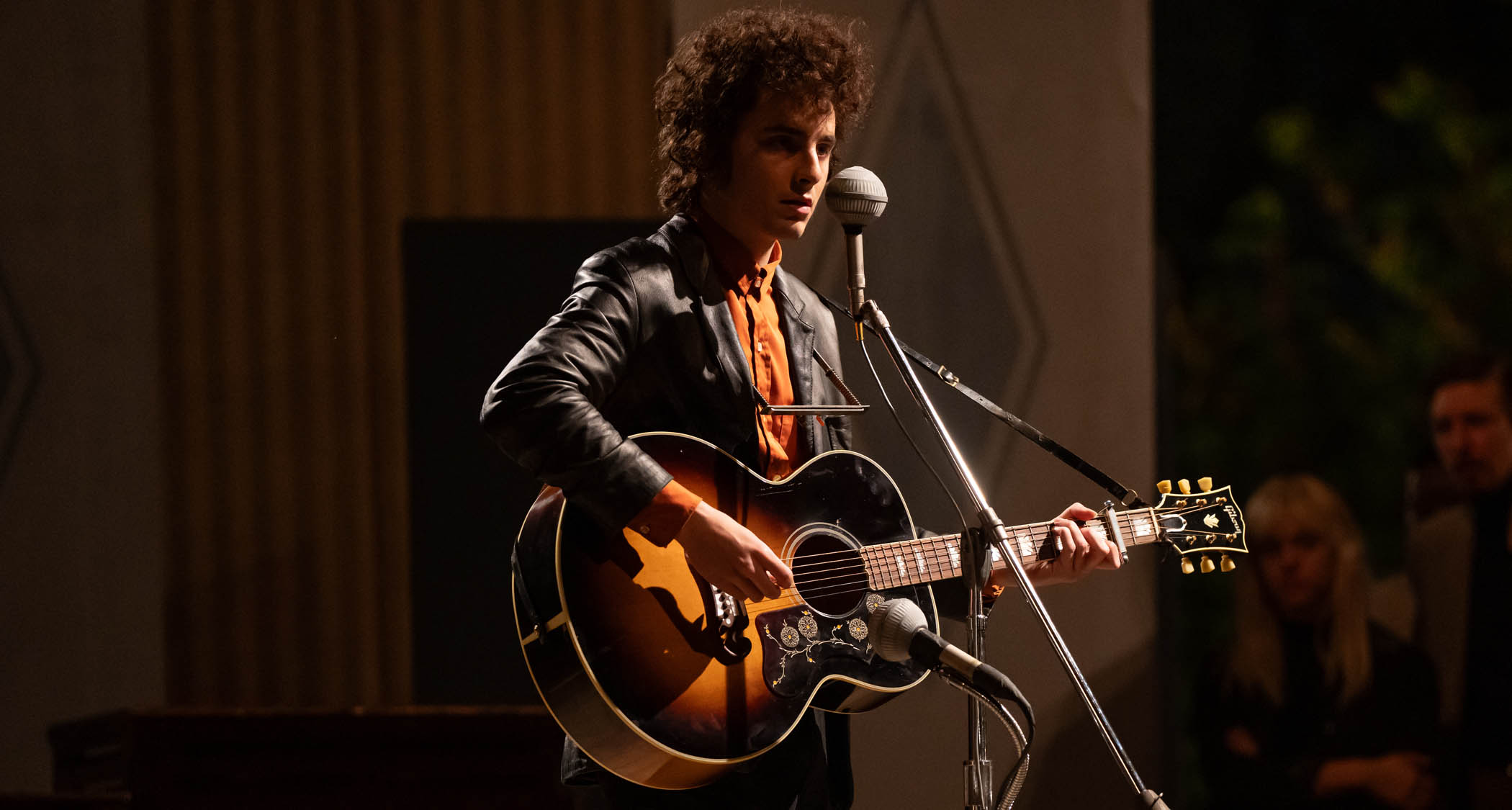
It must be so strange about not just teaching the guitar to a beginner but just teaching one style – one player’s style! That’s such a challenge because usually you build up different skills over time.
“Well, it really focused us! If somebody just came to me and said, ‘Larry, could you teach me how to play lead guitar?’ Then they would say, ‘I want to play some Eric Clapton… some John McLaughlin. This and that…’ We were able to focus just on this. That was an advantage and a blessing also, and as I got into the process – this was no brilliant thing on my end – it dawned on me, ‘Wow! I think that we’re learning how to do this just how Bob learned how to play.’
“Again, I’m no Dylanologist but I have known his music since I was a kid. I think that Bob, growing up in Minneapolis, and he had his friend who had the big record collection, and the record collection had Lead Belly and Woody Guthrie, and Ramblin’ Jack Elliott, and whomever you want to name, Bob was a sponge. In my imagination, Bob borrowed the records, wore it out, got his guitar out, had a good ear, and could hear what was going on. Bob learned quickly, I believe, and kind of the same thing happened here.”
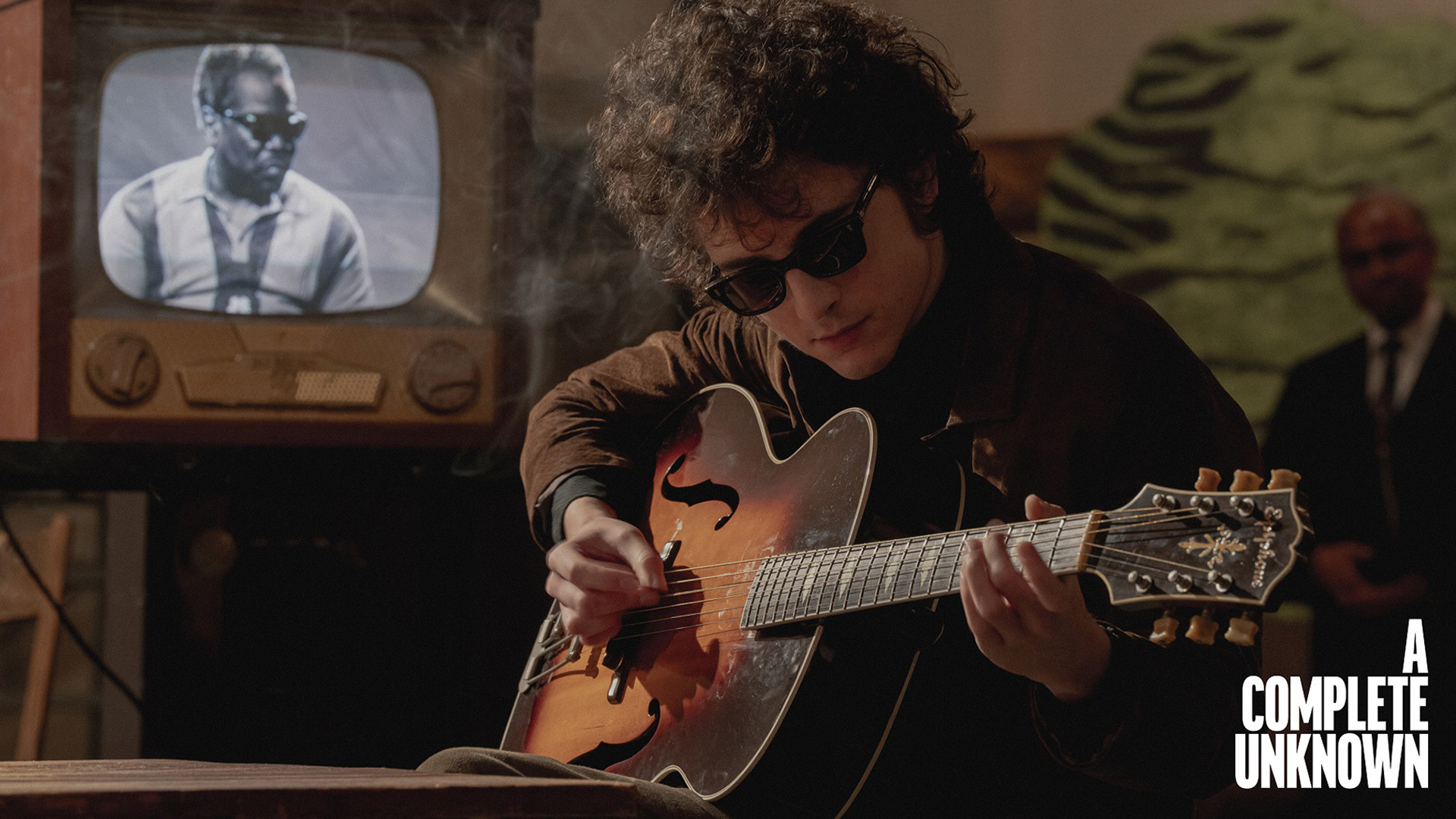
And the moment where you realise that all this practice worked was when he performs Song To Woody right at the beginning of the movie. That fingerstyle is difficult. Was that something that came naturally to Timothée?
“Isn’t it difficult sometimes to explain rhythm and time to somebody if they don’t really have it in their body, right? But Timothy is very experienced, and he attended the High School of Music and Art here in New York, it’s a very prestigious school – they call it LaGuardia now – where the music students are learning all kinds of music education, and so he’s a rhythmically gifted guy.
“Now, you still have to explain the mechanics of the right hand and how it’s going to work, but I think that’s an example of, like, if someone doesn’t have good natural time or rhythm, yes, you can put them on the metronome, you can do this and that and try and get them there, but there’s a difference between somebody like that and then somebody like Timothée who got it right away.”
Was he a method guy? He wasn’t in character when you were doing this?
“That’s a great question. No, he wasn’t a method guy. I was also very impressed – again – at this singing and playing from the downbeat. When he was singing, he was not doing a Dylan imitation. He was himself. And maybe it was in the spirit of [Dylan]. He was never slavish about it, ‘I gotta do it this way…’ He did it organically.
“I think he knew what stage he was at in the process. Like, now he was in the stage of learning the guitar parts and the singing, and he focused on that without – well, I didn’t see any obvious acting going on in front of me! [Laughs] What I saw was guitar playing and singing.”
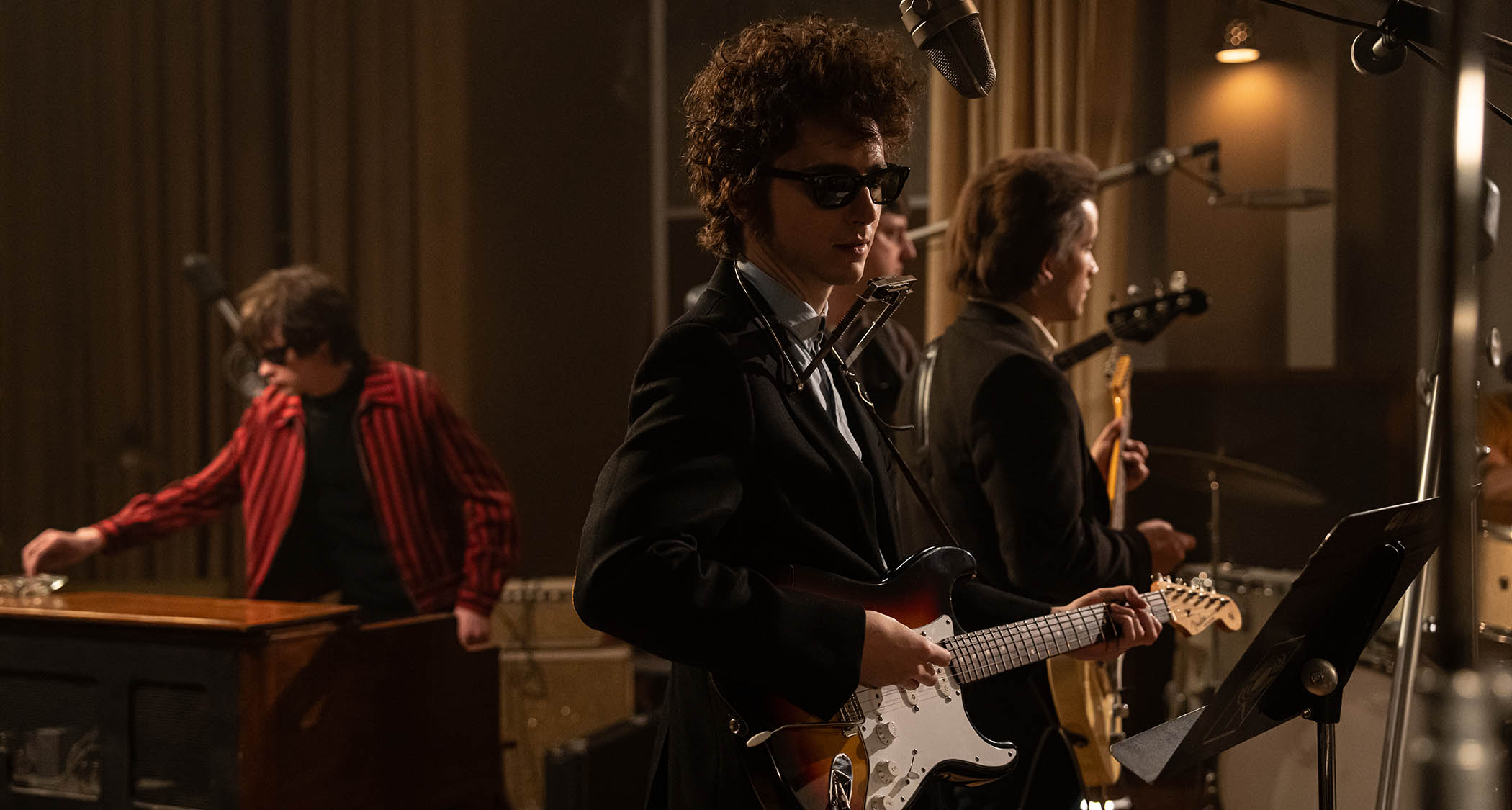
How did you teach that transition from acoustic to electric guitar? Again, Dylan is a fascinating electric player. He’s unconventional.
“I hope I have the history somewhat right here, but, Bob was in London or whatever and got a Stratocaster, and I think Bob just applied almost the same acoustic technique to the electric guitar, and if you watch what goes down at Newport, I think that that is what happened.
“Essentially there wasn’t there wasn’t a big leap. We could name guys who play both acoustic and electric and have totally different techniques on either instrument – Mark Knopfler. I think when you see Bob later on he played almost like Curtis Mayfield or something. He had adjusted, doing things that you couldn’t do on acoustic guitar he was now playing them on electric.
“He was probably somewhat influenced by seeing Robbie Robertson play. But at Newport, where this was brand new, he kind of attacked that Strat the way he attacked his Gibson.”
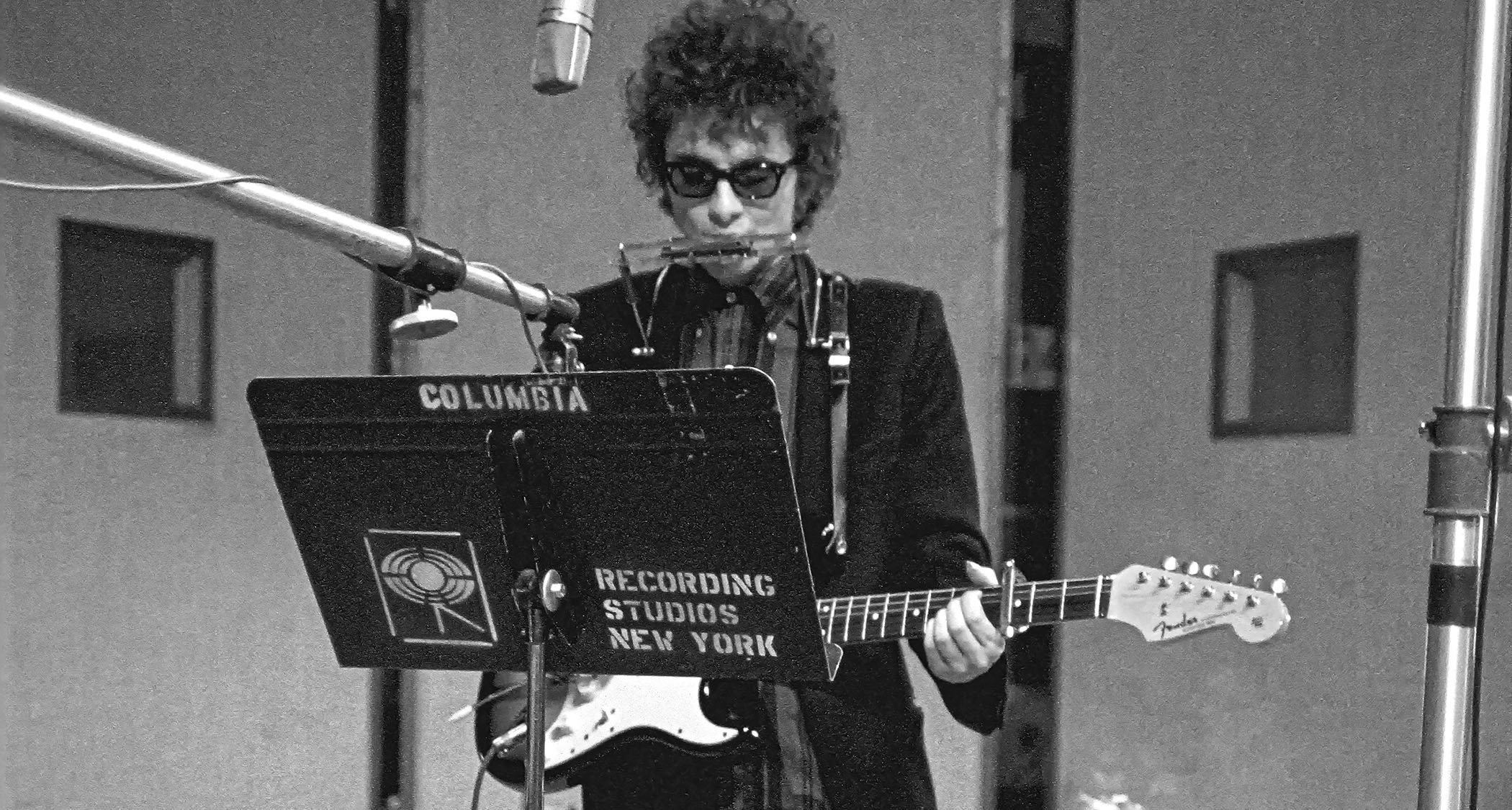
What did he learn on? Did he come in with a Fender Redondo series or a J-45?
“I love that question. When he first came over we used my guitar. I told him, ‘Show up without a guitar. I have a couple of guitars for us.’ Then he went to Guitar Center here in New York, on [West] 14th Street, and he did an incredibly humble thing. And again, this was pre-Covid, November or December of 2019. He did the most humble thing, he went in there and he bought a $200 Yamaha acoustic guitar.
Well, he showed up with a $200 Yamaha guitar and you know what? It was very playable and sounded good
“I spoke to Jim Mangold, the director, about that. Jim was asking, ‘Does he have a guitar?’ I said, ‘Yeah, he went and bought a $200 Yamaha guitar. And Jim goes, ‘That’s interesting.’ I said, ‘Look, if he shows up with it and I think it’s not appropriate we’ll go shopping and I’ll return it.’
“Well, he showed up with a $200 Yamaha guitar and you know what? It was very playable and sounded goodAnd the other thing that was good about it was that you don’t really have to worry about an instrument like that and if it falls over it’s not the end of the world – rather than going out and getting the proper vintage J-45.
“And so that’s what we started on. There’s prop people on a movie, so they were in touch with Gibson, and Gibson provided him with a few different instruments that were more period-correct or whatever.”
So he learned just like the rest of us?
“I loved that he showed up with a $200 guitar. He didn’t show up with a $2,000 guitar and he could have. I just loved that he did that. It’s humble.”
Do you think that he will still play guitar now? Did he get the bug.
“He does and he will. He got so into it and he got really good. He’s a musician. He’s a really good singer. He knows all about music intuitively and he’ll keep playing.”
- A Complete Unknown is showing now in the UK. See here for screening details.
- A Complete Unknown: Original Motion Picture Soundtrack features Chalamet’s performance of Bob Dylan classics and is out on 28 February, available for pre-order now via Columbia.
Jonathan Horsley has been writing about guitars and guitar culture since 2005, playing them since 1990, and regularly contributes to MusicRadar, Total Guitar and Guitar World. He uses Jazz III nylon picks, 10s during the week, 9s at the weekend, and shamefully still struggles with rhythm figure one of Van Halen’s Panama.



